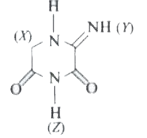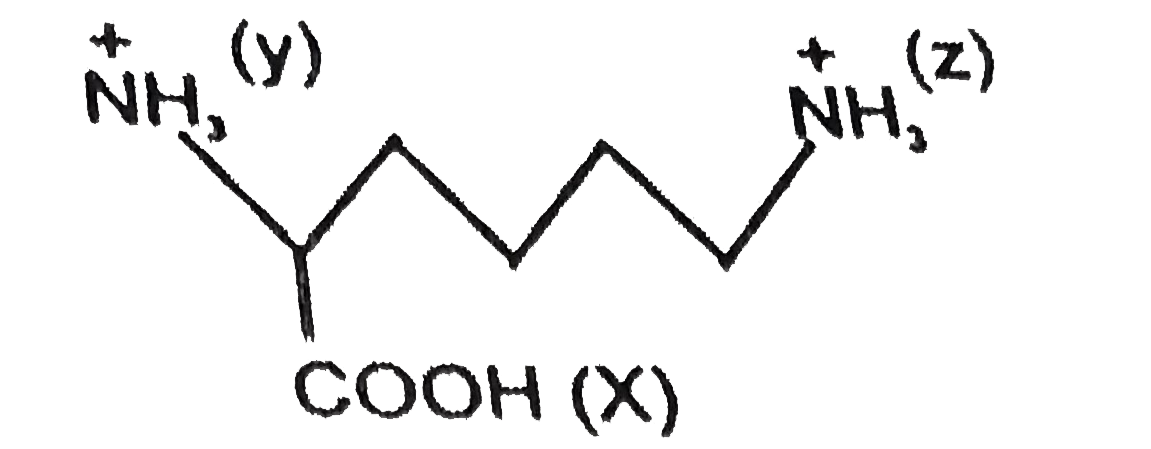Three elements of 3rd period x,y,z such that the oxide of X is acidic, y is amphoteric and z id basic, the order of atomic no of three elements isL
x>y>z
y>x>z
z>x>y
x>z>y
The correct Answer is:A
To solve the question, we need to identify three elements from the third period of the periodic table (sodium, magnesium, aluminum, silicon, phosphorus, sulfur, chlorine, and argon) based on the properties of their oxides.
1. Identify the Oxide Properties:
- We need to find three elements (X, Y, Z) such that:
- The oxide of X is acidic.
- The oxide of Y is amphoteric.
- The oxide of Z is basic.
2. Determine the Elements:
- Acidic Oxide (X): In the third period, the element that forms an acidic oxide is Sulfur (S). Sulfur dioxide (SO₂) is acidic.
- Amphoteric Oxide (Y): The element that forms an amphoteric oxide is Aluminum (Al). Aluminum oxide (Al₂O₃) is amphoteric.
- Basic Oxide (Z): The element that forms a basic oxide is Sodium (Na). Sodium oxide (Na₂O) is basic.
3. List the Elements with Atomic Numbers:
- Sodium (Na) has an atomic number of 11.
- Aluminum (Al) has an atomic number of 13.
- Sulfur (S) has an atomic number of 16.
4. Order the Elements by Atomic Number:
- Based on the atomic numbers:
- Z (Na) = 11 (Basic)
- Y (Al) = 13 (Amphoteric)
- X (S) = 16 (Acidic)
- Therefore, the order of atomic numbers is:
- X > Y > Z (16 > 13 > 11).
5. Final Answer:
- The order of atomic numbers of the three elements is: X > Y > Z.
- We need to find three elements (X, Y, Z) such that:
- The oxide of X is acidic.
- The oxide of Y is amphoteric.
- The oxide of Z is basic.
- Acidic Oxide (X): In the third period, the element that forms an acidic oxide is Sulfur (S). Sulfur dioxide (SO₂) is acidic.
- Amphoteric Oxide (Y): The element that forms an amphoteric oxide is Aluminum (Al). Aluminum oxide (Al₂O₃) is amphoteric.
- Basic Oxide (Z): The element that forms a basic oxide is Sodium (Na). Sodium oxide (Na₂O) is basic.
- Sodium (Na) has an atomic number of 11.
- Aluminum (Al) has an atomic number of 13.
- Sulfur (S) has an atomic number of 16.
- Based on the atomic numbers:
- Z (Na) = 11 (Basic)
- Y (Al) = 13 (Amphoteric)
- X (S) = 16 (Acidic)
- Therefore, the order of atomic numbers is:
- X > Y > Z (16 > 13 > 11).
- The order of atomic numbers of the three elements is: X > Y > Z.
Similar Questions
Three elements X, Y and Z are in the 3rd periodic table. The oxides of X, Y and Z, respectively, are basic, amphoteric and acidic, The correct order of the atomic numbers of X, Y and Z is :
View Solution(X),(Y),(Z) are elements in third short period. Oxide of (X) is ionic, (Y) is amphoteric and (Z) is a giant molecule. (X),(Y) and (Z) will have atomic number in the order :
View Solution
Knowledge Check
 The correct basicity order of atoms X, Y and Z is :AX>Y>ZBZ>Y>XCZ>X>YDY>X>Z
The correct basicity order of atoms X, Y and Z is :AX>Y>ZBZ>Y>XCZ>X>YDY>X>Z(a),(b) and (c) are elements in the second short period. Oxide of (a) is ionic, that of (b) is amphoteric and of (c) of gaint molecule. (a),(b) and (c) have atomic number in the order-
A(A)lt(B)lt(C)B(C)lt(B)lt(A)C(A)lt(B)lt(B)D(B)lt(A)lt(C)
What is the acidity order of x,y & z ?

View SolutionThree elements of Dobereiner.s triad are X, Y & Z. If the atomic mass of X is 7 and Z is 39,Calculate the atomic mass of Y.
View SolutionAn element X belongs to 3rd period and group II of the periodic table . State :
Name of the elements.
View Solution
Where a,b,c,d,e,f,g,h ar 3rd period elements. If difference between atomic number of elements b and e is x and difference between atomic number of elements c and f is y. What is the value of x−y.
View SolutionIf P, Q, R and S are elements of 3rd period of p-block in modern periodic table, among these one element is metal and rest are non-metals and their order of electronegativity is given as:
P<Q<R<S
Which element is expected to form amphoteric oxide?
View SolutionA compound contains atoms X, Y and Z. The oxidation number of X is +3, Y is +5 and Z is −2. The possible formula of the compound is
View Solution
